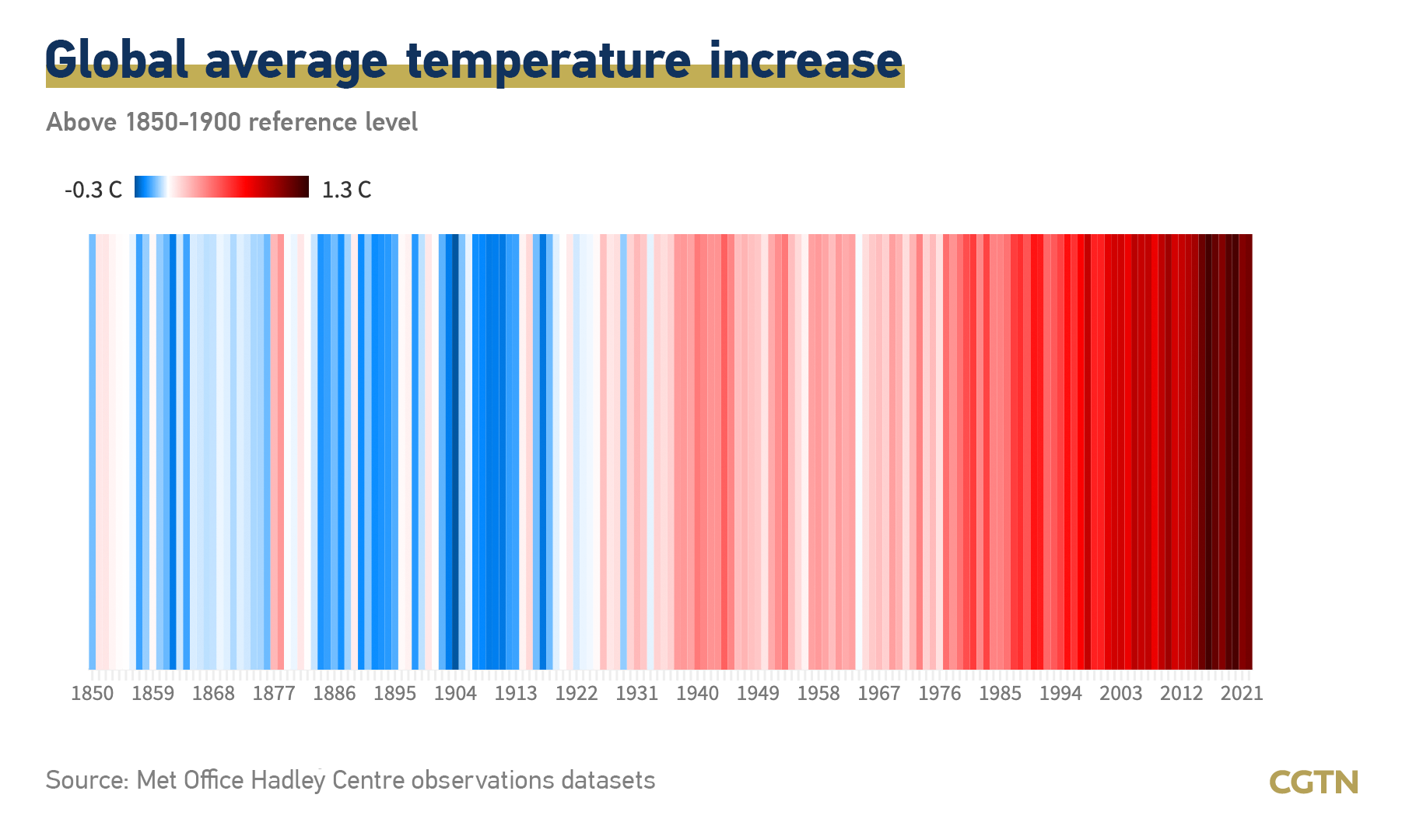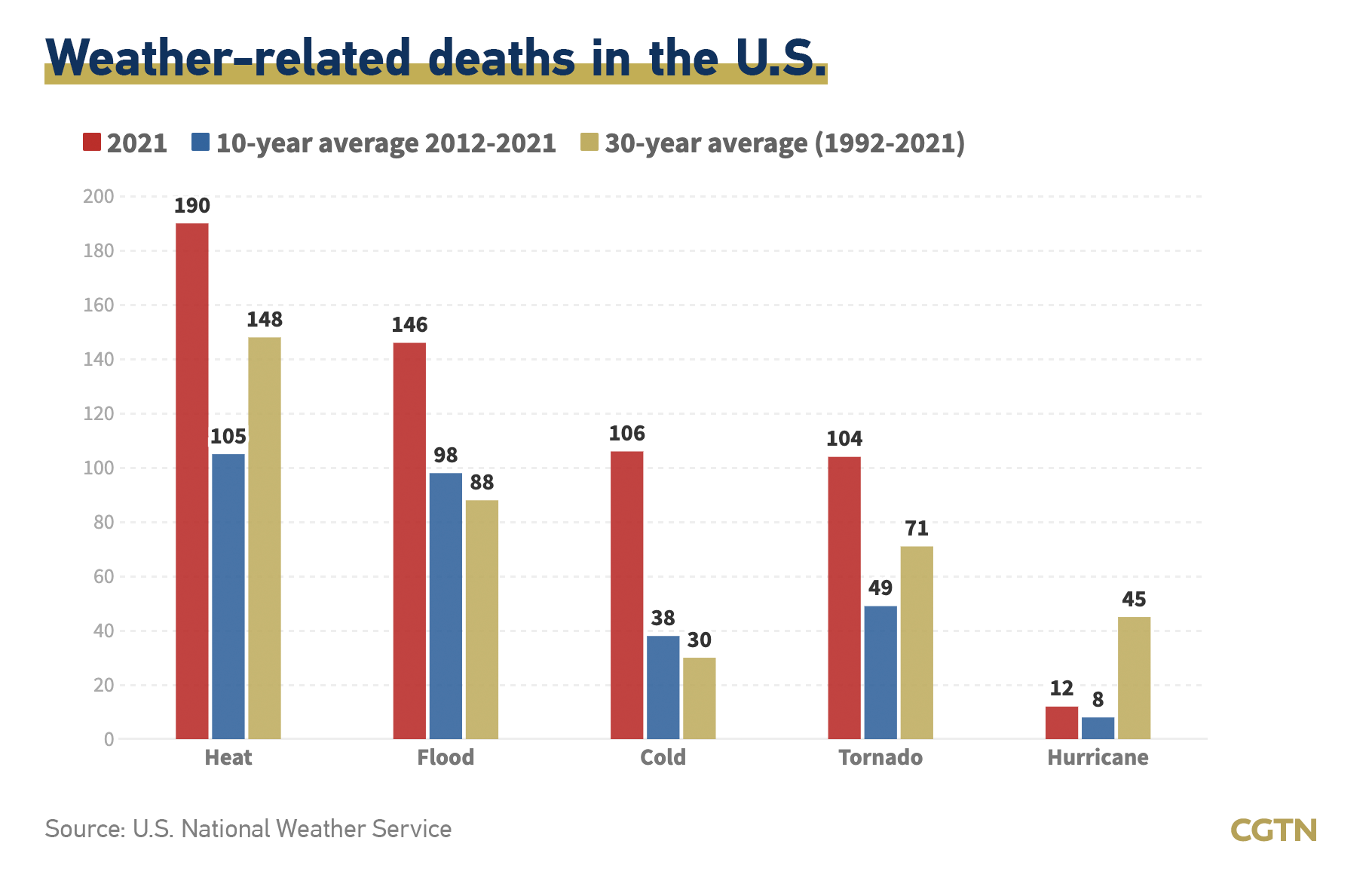Amid extreme heat, drought and wildfires, many parts of the world have just experienced one of the three warmest Julys on record, the UN weather agency said in early August.
It was "one of the three warmest [Julys] on record, slightly cooler than July 2019, warmer 2016 – but the difference is too close to call," noted World Meteorological Organization (WMO) spokesperson Clare Nullis.
"This is despite the La Niña event that's meant to have a cooling influence," she said.
The most recent seven years, 2015 to 2021, are the seven warmest years on record, according to the State of the Global Climate Report 2021 released by the WMO in May.
The global annual mean temperature in 2021 was around 1.11 (±0.13) degrees Celsius above the 1850-1900 pre-industrial average.
There is a 50:50 chance of the annual average global temperature temporarily reaching 1.5 degrees Celsius above the pre-industrial level for at least one of the next five years – and the likelihood is increasing with time, according to the WMO.
And there is a 93 percent likelihood of at least one year between 2022 and 2026 becoming the warmest on record and dislodging 2016 from the top ranking.

Why is the 1.5 degrees Celsius limit important?
Countries agreed under the global 2015 Paris Agreement to cut emissions fast enough to limit global warming to 2 degrees Celsius and aim for 1.5 degrees Celsius to avoid its most dangerous effects.
A heatwave that occurred once per decade in the pre-industrial era would happen 4.1 times a decade at 1.5 degrees Celsius of warming, and 5.6 times at 2 degrees Celsius, the UN's Intergovernmental Panel on Climate Change (IPCC) says.
The IPCC believes that 1.5 degrees Celsius will be reached by 2040 in all scenarios. If emissions aren't slashed in the next few years, this will happen even earlier.
Heat-related deaths
According to estimates by the U.S. National Weather Service, heat has been the single largest contributor to weather-related deaths over the last 30 years.

European countries recorded thousands of additional deaths during last month's brutal heat wave, according to preliminary data.
The Spanish monitoring system lists 1,682 heat-related deaths for the period of July 11-24, when several days saw temperatures of 45 degrees Celsius in parts of the Iberian Peninsula.
Germany, where temperatures hit 40 degrees Celsius as far north as Hamburg, recorded more than 3,000 excess deaths in the week of July 18 compared with the last five years, excluding deaths attributed to the coronavirus pandemic.
In England, according to its annual official heat mortality monitoring reports, 2,556 and 1,634 heat-related mortalities were reported in 2020 and 2021, respectively.
"Heat kills. Over the past decades, hundreds of thousands of people have died as a result of extreme heat during extended heatwaves, often with simultaneous wildfires," World Health Organization (WHO) regional director for Europe Hans Kluge said in a statement last month, calling for joint action to tackle climate change.
Climate change risks behind the heatwaves
The UK's Met Office estimates that the extreme heat seen during the most recent heatwave is 10 times more likely now because of climate change. And things could worsen.
The Met Office has also pointed out that heatwaves are not just hotter: They're also lasting longer. Warm spells have more than doubled in length in the past 50 years.
Extreme heat can also increase the risk of other types of disasters. Heat can exacerbate drought, and hot, dry conditions can in turn create wildfire conditions.
"In a few decades this might actually be a quite cool summer," said Friederike Otto, a climate scientist at Imperial College London.
Read more:
Graphics: Heatwaves sweep across the globe

